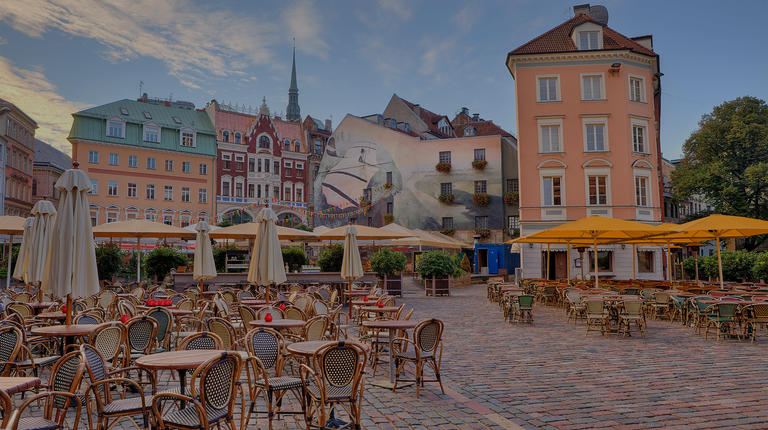Eastern Europe is rich in culture and flavor, especially when it comes to food. The cuisine of the region includes hearty stews, warming beverages and scrumptious desserts. Whether you go beyond borscht with lesser-known dishes such as salmon coulibiac or indulge in such street food as the pizza-like langos, here are a few local delicacies you might want to sample during your travels.
travel inspiration
A Taste of Eastern Europe

Svícková and Ovocné Knedlíky / Czechia
The Czechs know their stuff when it comes to comfort food designed to stick to your ribs on a chilly day. Among the most traditional is svícková (pronounced sveech-coh-vah)—beef sirloin boiled in a cream vegetable sauce and served with bread dumplings, cranberry jam and sour cream. The dish is considered uniquely Czech as it does not borrow from other Eastern European countries and can easily be found in cities like Prague.
What’s a good meal without dessert? Try ovocné knedlíky (pronounced ovot-snee kned-lee-kee), a traditional fruit dumpling made with potato dough and filled with plum jam.
Sauerbraten and Currywurst / Germany
Sausage of many varieties, schnitzel with noodle and crisp apple strudel are among the favorite things that come to mind when most people think of Germanic foods. However, sauerbraten, a hearty pot roast marinated in vinegar and spices, is one of the country’s most popular dishes. It is typically served with red cabbage, potato dumplings or spätzle (egg noodles).
If you’re looking for a more guilty and modern pleasure, try currywurst. This fast food consists of sliced pork sausage topped with curry ketchup. Herta Heuwer of West Berlin is credited with creating the recipe in 1949 when she mixed ketchup with curry powder and Worcestershire sauce, and poured it over cooked sausages. She later sold the dish from a street kiosk. A plaque honoring Heuwer sits on the site of her original stall in Berlin and there was also a Google Doodle commemorating her 100th birthday in 2013.
Sorrel Soup and Black Balsam / Latvia
Sorrel soup is a harbinger of springtime in Latvia. The leafy green sorrel herb has a tart lemony taste that makes for a refreshing dish. Besides sorrel, the soup consists of carrots, onions, dill and pearl barley. It can be served hot or cold and is garnished with hardboiled eggs and sour cream.
If you’re in the mood for a potent potable, try Riga’s Black Balsam. This thick, black alcoholic beverage has an herbal flavor and has been produced since 1700. Good luck finding the recipe as it’s closely guarded, but it is believed to include ginger, oak bark, bitter orange peel and cognac.
Bigos and Makowiec / Poland
No matter where you are in Eastern Europe, you will inevitably encounter sauerkraut. The Polish have a tasty take on the classic pickled cabbage dish in bigos, or hunter’s stew, which is considered by many to be the national dish. It is traditionally made with kielbasa sausage and pork that is slow simmered in sauerkraut. Many believe the recipe was created in Poland in the late-14th century by Lithuanian Prince Wladislaus, who served the rustic stew to his hunting party.
It doesn’t have to be Christmas or Easter to enjoy makowiec (pronounced ma-koh-vyets), a traditional poppy seed pastry. The Polish hold a soft spot for this delicious confection as almost everyone has memories of their grandma making the dessert for a special occasion. The trick to good makowiec is in the dough, which is made from sour cream, butter and eggs.
Pelmeni and Kasha / Russia
Dumplings abound all across the region. In Russia, pelmeni are a classic snack served at both food stands and fancy restaurants. The dough is stuffed with minced meat such as pork, lamb or beef, or in some areas mushrooms and turnips. Pelmeni literally means “ear bread” due to the shape of the dumplings.
Kasha is a dish with a long history in Russia—about a thousand years—and was often served at weddings and royal feasts. The basic recipe for this buckwheat porridge includes butter, onions and occasionally mushrooms. However, kasha is a very versatile staple and is a part of many types of savory meals such as salads and pilafs. Plus, it’s good for you as buckwheat is rich in vitamins and minerals.















